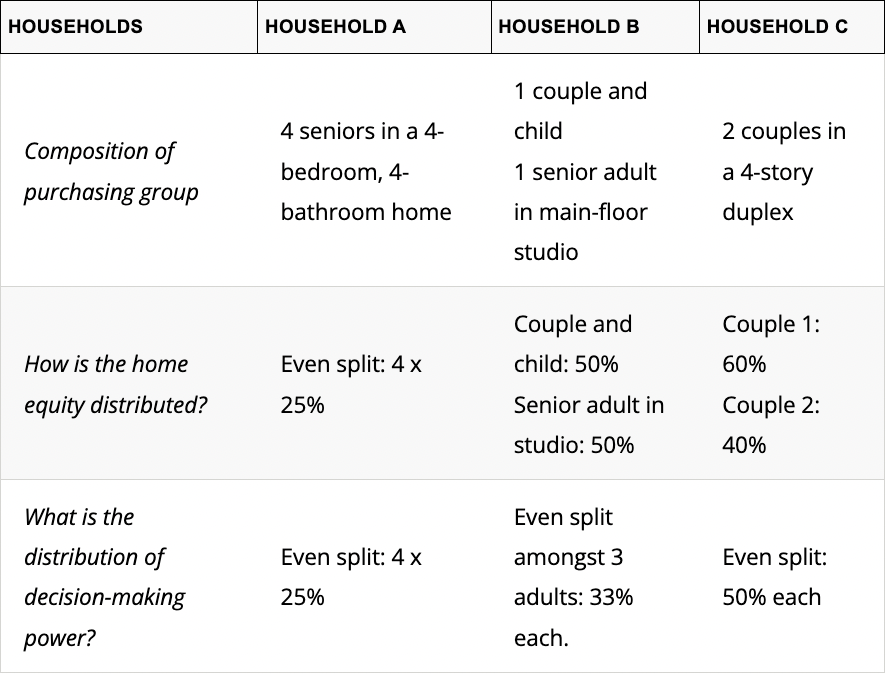Creating Your Co-Ownership Guidelines: Collective Decision Making

There are many models and resources for collective decision making, and we recommend that you determine a decision-making structure with your group early on.
You will have many decisions to make throughout the process of co-purchasing your home, and developing skills and concrete systems for making collective decisions will only benefit your group as you continue to live together after your purchase; home dynamics, spending, budgets for renovations, activities within your house, etc. are all areas that will require ongoing communication and decision-making with your group.
Your group may want to make decisions by putting them to a vote, and document your distribution of decision-making power in your legal agreement. Your group may want to operate by unanimous consensus, or make certain decisions by authority, whereby one party has the final say. It is up to your group to determine which model(s) work best for you.
As we mentioned in Building Your Financial Model, equity shares are not necessarily a mirror reflection of decision-making power. Every group is different, and members can contribute many things to a living arrangement that aren’t always financial.Depending on the activities and requirements of your home, decision-making power can have a very different distribution.
- Equity is about the percentage of ownership of the property.
- Decision-making power decides what happens in your home.
The equity shares of the home are decided by mutual agreement and should be done when your budget is set, and finalized when your property is purchased.
Look at the different allocations of equity vs. decision-making power within these 3 households:

Additional Considerations
- Daily Maintenance vs. Major Decisions: Your group may want to differentiate decision-making power for daily maintenance and activities from major expenditures like renovations.
- Priority on Certain Issues: Some parties may have decision-making priority on specific issues.
- Third-Party Mediator: Consider identifying a third-party mediator to help resolve any deadlock votes or difficulties in reaching a consensus.
Your Co-Ownership Guidelines should include a description of your collective decision-making process. It should be as specific as possible, and we recommend including it in your Legal Agreement.
Once your group has solidified your model for collective decision-making, it is time to move on to communication.
How Do You Create Your Co-Ownership Guidelines?
Click on the sections below to learn more.
- Creating Your Co-Ownership Guidelines: Getting Started
- Creating Your Co-Ownership Guidelines: Identifying Shared Goals
- Creating Your Co-Ownership Guidelines: Collective Decision Making
- Creating Your Co-Ownership Guidelines: The Power of Communication
- Creating Your Co-Ownership Guidelines: Conflict Resolution
- Creating Your Co-Ownership Guidelines: Real-Life Case Studies
